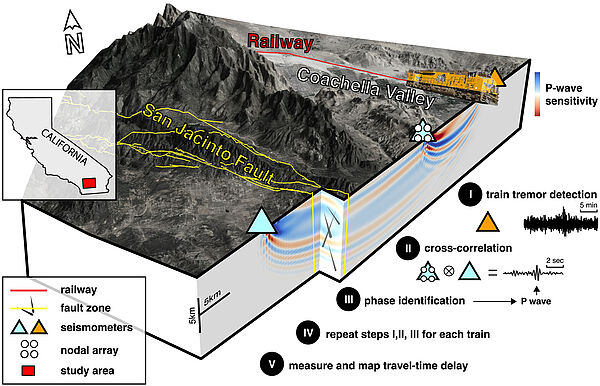In recent decades, seismic noise, an ensemble of non-earthquake ground motions recorded by seismometers, has seen increasing applications. From either natural or anthropogenetic sources, generated seismic waves carry rich information about their propagation medium. Extracting and organizing such information enables us to probe the underlying structure and better understand the underlying physical processes. This talk focuses on seismic velocity monitoring using anthropogenic seismic signals. Seismic velocity can be affected by multiple reasons, such as faults loading and releasing stress before and during earthquakes and fluid intrusion and migration inside porous media. Tracking the variation of seismic velocity is a valuable tool for monitoring the physical state of the target systems. Several features make anthropogenic seismic signals particularly suitable for velocity monitoring. Such signals are often dominated by high-frequency body waves, providing sharp spatial resolution. In addition, anthropogenic sources are typically fixed in space (such as industrial operations) or moving along fixed trajectories (such as trains and cars), making it possible to track and simulate the source motions. This talk introduces a data-driven method to find powerful, persistent seismic sources for seismic velocity monitoring. It is followed by a case study showing how train-generated seismic motions aid the monitoring of a fault zone where a big earthquake is prone to happen. The talk will end with an introduction of other applicable scenarios, including CO2 sequestration, monitoring water injection and permafrost degradation.


